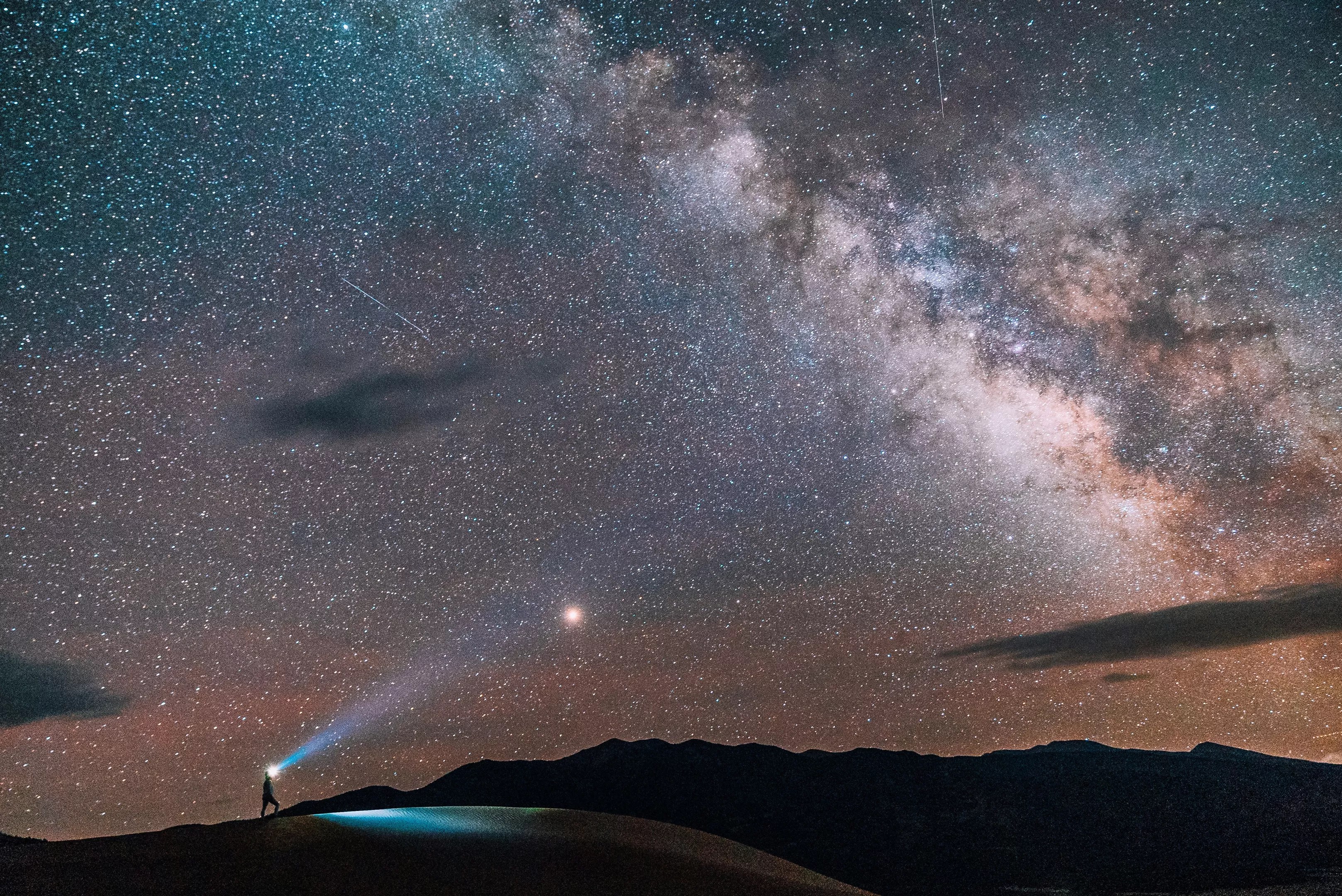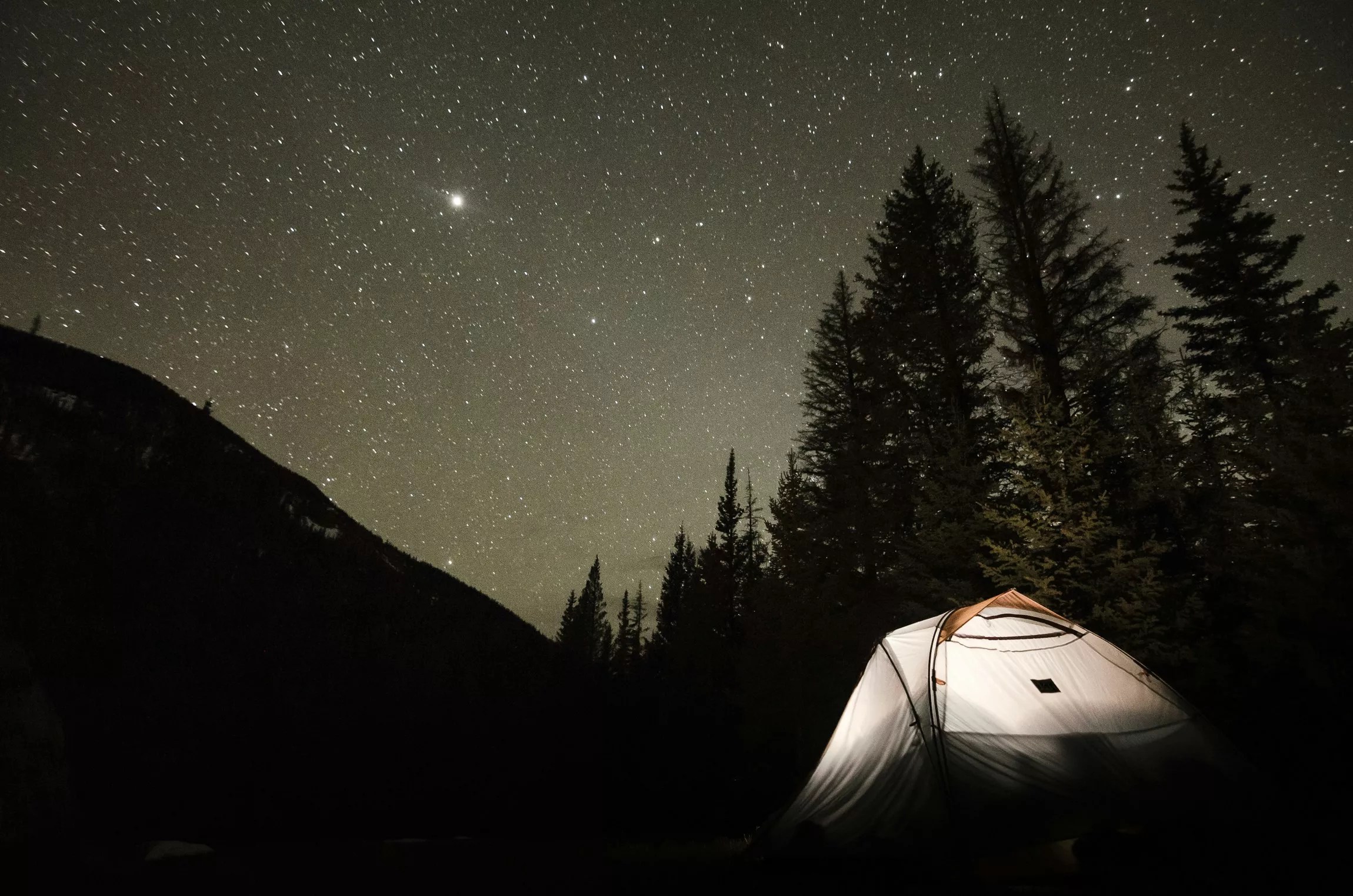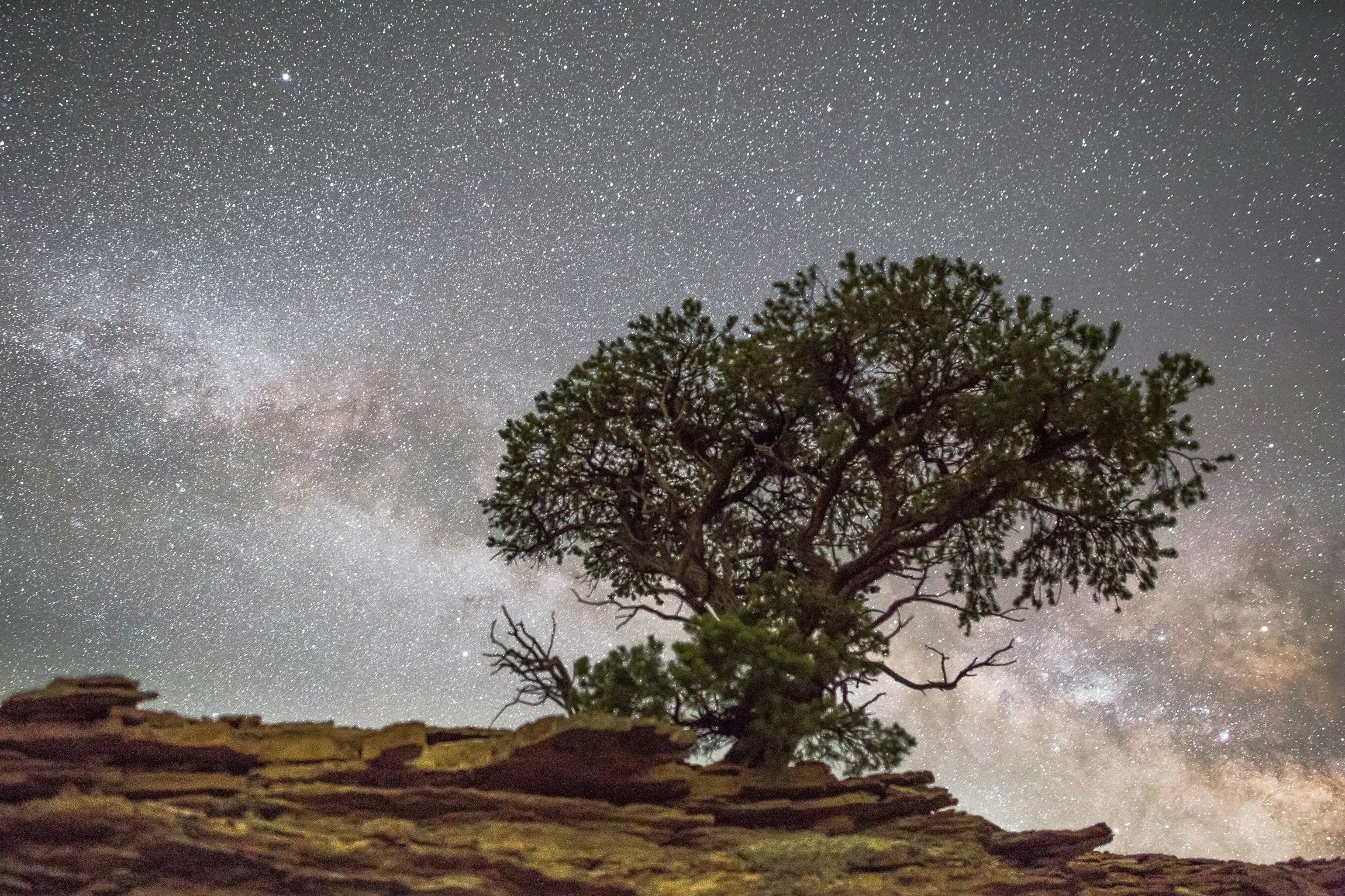
Josh Gordon / Unsplash

Audio By Carbonatix
High elevation has its advantages. In Colorado, the veil between Earth and outer space is just a little bit thinner. This summer, the Centennial State was ranked as one of the places in the U.S. where sky watchers are most likely to spot an asteroid. Now, luxury vacation home rental service Wander has ranked Colorado as the third-best state for stargazing.
Particularly prime star-watching sites are celebrated as Dark Sky Places; this official designation applies to nineteen areas across Colorado – but given their remote nature, not all are easy to access. With so many Dark Sky Places, Colorado stargazing opportunities are only topped by Arizona and Utah, according to Wander’s research.
Far from the glow of city lights, the night skies in Colorado’s mountain regions flicker with countless stars and sometimes even Northern Lights. Keep in mind that you’ll need a telescope to spot an asteroid, however. Low humidity and a high elevation create ideal viewing conditions in the state, especially when there’s a new moon.
To make your cosmic quest simple, we’ve created an epic road trip itinerary that averages just two hours of driving each day. Enjoy outdoor adventures, historic landmarks and culinary experiences, followed by the mesmerizing main attraction at these five places to stargaze in Colorado:
Denver, make your New Year’s Resolution Count!
We’re $17,500 away from our End-of-Year campaign goal, with just a five days left! We’re ready to deliver — but we need the resources to do it right. If Westword matters to you, please contribute today to help us expand our current events coverage when it’s needed most.
Day 1: Browns Canyon National Monument
Salida
Your journey begins with a visit to Colorado’s newest International Dark Sky Park: Browns Canyon National Monument. This destination lies two hours southwest of Denver, between the communities of Buena Vista and Salida. Spend the day whitewater rafting or fly fishing on the Arkansas River; local outfitters offer guided excursions. Or lace up your hiking boots and summit one of the area’s fourteeners before soaking in some of the state’s best hot springs. Come nightfall, the stars are especially impressive from the Ruby Mountain and Hecla Junction campgrounds, which you can book online for $28 per night.

Jupiter shining brightly above the San Luis Valley.
Andrew Gloor / Unsplash
Day 2: Great Sand Dunes National Park and Preserve
Mosca
Two hours south of Salida lies Great Sand Dunes National Park, another International Dark Sky Park with incredible stargazing opportunities. While the sun is shining, hike up some of the continent’s tallest dunes, then sled or sandboard down the slopes before cooling off in Medano Creek. Rangers host summer astronomy programs every Saturday at 8:30 p.m., offering insights into nocturnal ecology and the night sky. For a more in-depth look, visit the nearby Kosmos Stargazing Resort for its two-hour guided experience, which includes a constellation tour using a laser pointer, plus the opportunity to view celestial objects through high-quality telescopes. Since this new luxury resort’s overnight villas won’t open until November, consider glamping at Frontier Drive-Inn, which shows movies beneath the stars on a big outdoor screen. Plan a pit stop at the quirky UFO Watchtower on the way to your accommodations.
Day 3: Lake Fork Earth and Sky Center
Lake City
On the third day of your trip, you’ll drive roughly two hours along the Silver Thread Scenic Byway. Spend the morning in Creede, a historic mining town set within a former volcanic caldera; sheer cliffs rise above its downtown strip, where you’ll find Old West charm and the Underground Mining Museum. Continue on to Carson, one of Colorado’s ghost towns, whose abandoned structures are accessible via a seven-mile hike or with a 4×4 vehicle. Finally, as the sun begins to set, head to the Lake Fork Earth and Sky Center or the neighboring Slumgullion Center: Both are designated International Dark Sky Parks. Pitch a tent at one of the area’s campgrounds or stay in a cabin in nearby Lake City, the most remote town in the lower 48 states.
Day 4: Black Canyon of the Gunnison National Park
Montrose
The next day, drive one hour north to Curecanti National Recreation Area, which is home to the 29-mile-long Blue Mesa Reservoir, the largest body of water in the state. From fishing and kayaking to lounging on a sunny mountain beach, it’s easy to fill the morning at one of Colorado’s best boating destinations. The Elk Creek and Lake Fork marinas offer various rentals, including pontoons and paddle crafts. Make a splash before driving another hour to Black Canyon of the Gunnison National Park. Short trails lead to stunning vistas featuring vertical cliffs and the raging Gunnison River below.

A radiant sky in Delta County, which encompasses Paonia.
Andrew Gloor / Unsplash
Day 5: Paonia
From Black Canyon, continue on the West Elk Loop Scenic Byway to one of Colorado’s most bountiful regions. On this ninety-minute drive, stop to sample sweet corn in Olathe, then pick your own apples, peaches and cherries at Big B’s Delicious Orchards, a beloved attraction in Paonia. This small, rural community is also home to several high-altitude vineyards. Bask in the beauty of the North Fork Valley while sipping away at Qutori Winery, Stone Cottage Cellars and more. When night falls in this International Dark Sky Place, a glittering tapestry appears above. Get a good night’s sleep at one of the lodging options in town before making the four-hour journey back to Denver the next day.